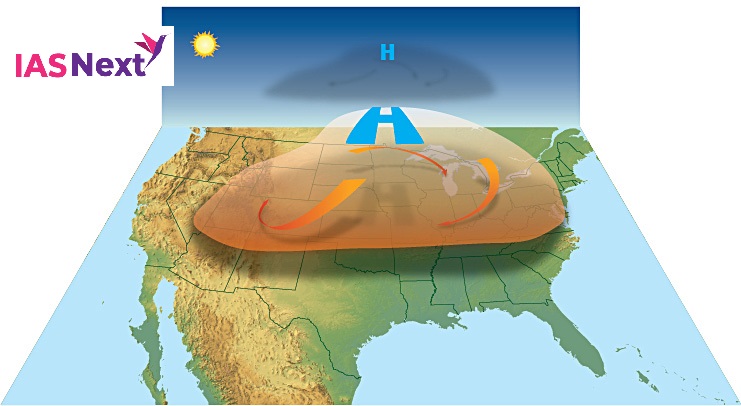CURRENT AFFAIRS
Get the most updated and recent current affair content on Padhaikaro.com
What is a heatwave?
- IAS NEXT, Lucknow
- 29, Apr 2022

Reference News:-
A heatwave has gripped the Vidarbha and Marathwada regions of Maharashtra. This is the fourth heatwave in the last two months, and the second in April. In fact, on April 26, Vidarbha was the hottest region in the country.
What is a heatwave?
- A region is considered to be under the grip of a heatwave if the maximum temperature reaches at least 40 degrees Celsius or more in the plains and at least 30 degrees Celsius or more in hilly regions.
- When the maximum temperature departure ranges between 4.5 and 6 degrees, the India Meteorological Department (IMD) declares a heatwave.
- A severe heatwave is declared when the recorded maximum temperature of a locality departure from normal is over 6.4 degrees Celsius.
- Also, if an area records over 45 degrees and 47 degrees Celsius on any given day, then the IMD declares heatwave and severe heatwave conditions, respectively.
Reasons:
The lack of pre-monsoon showers has also led to an increase in the overall maximum temperature. Maharashtra recorded 63 per cent deficient rainfall from March 1 to April 26.
Reasons why overall India is experiencing more heat waves are:
- Magnified effect of paved and concrete surfaces in urban areas and a lack of tree cover.
- Urban heat island effects can make ambient temperatures feel 3 to 4 degrees more than what they are.
- More heat waves were expected as globally temperatures had risen by an average 0.8 degrees in the past 100 years. Night-time temperatures are rising too.
- Higher daily peak temperatures and longer, more intense heat waves are becoming increasingly frequent globally due to climate change.
- High intensity of UV rays in medium-high heat wave zones.
- Combination of exceptional heat stress and a predominantly rural population makes India vulnerable to heat waves.
Way ahead for India- How should India deal with heat waves?
- Identifying heat hot-spots through appropriate tracking of meteorological data and promoting timely development and implementation of local Heat Action Plans with strategic inter-agency co-ordination, and a response which targets the most vulnerable groups.
- Review of existing occupational health standards, labour laws and sectoral regulations for worker safety in relation to climatic conditions.
- Policy intervention and coordination across three sectors health, water and power is necessary.
- Promotion of traditional adaptation practices, such as staying indoors and wearing comfortable clothes.
- Popularisation of simple design features such as shaded windows, underground water storage tanks and insulating housing materials.
- Advance implementation of local Heat Action Plans, plus effective inter-agency coordination is a vital response which the government can deploy in order to protect vulnerable groups.
The most heatwave prone areas — known as the Core Heatwave Zone (CHZ) are:
Rajasthan, Punjab, Haryana, Chandigarh, Delhi, West Madhya Pradesh, Uttar Pradesh, Chhattisgarh, Orissa, Vidarbha in Maharashtra, parts of Gangetic West Bengal, Coastal Andhra Pradesh, and Telangana.